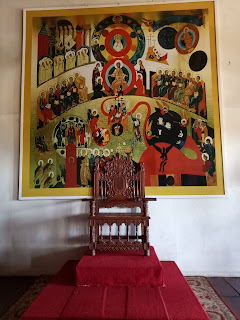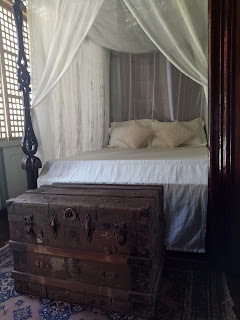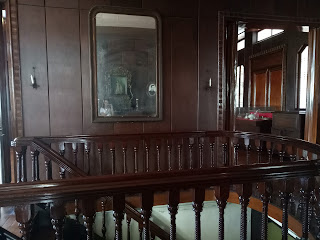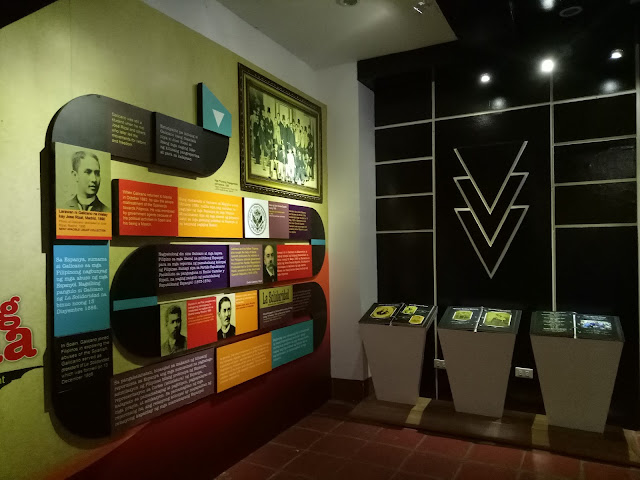Heritage Town of Taal One-Day-Walkatour
Taal has always been an important place to me.
This was among the towns I knew to have existed inside the Batangas Province before I worked in the provincial government and memorized all its towns and cities. I went to school in Our Lady of Caysasay Academy for eight long years. However, it was only this November 2016 that I was given the chance to visit this Heritage Town.
Part of our tour guiding seminar was to immerse with the existing tour packages present in the province. And one of the sought after packages is the tour in the Heritage Town of Taal. We were assisted by the Municipal Government of Taal through its Municipal Tourism Officer Beth Quinto. Along with her team, they provided us the brief information about the sites we visited during the walkatour.
We gathered in front of Casa Cecilia which was formerly a school for girls and now an event center. We started our one day walking session from here down to the Museo nina Felipe at Marcela Agoncillo.
Basilica of St. Martin De Tours
The Basilica of St. Martin De Tour, designed by the famed Spanish architect Don Luciano Oliver, stands 95 meters long and 45 meters wide on a plateau in the heart of Taal. The facade resembles St. Peter's Basilica in Rome, with its iconic columns. The Basilica is the biggest Catholic Church in Asia.
As you enter the church, you will see the detailed structure but beware of the falling debris.
Inside the church, you can how vast the area it occupies. Events like weddings and graduations seem to be grand due to its long aisle.
This baptismal area is unnoticeable at the left side of the church but if you look closely, its design is exquisitely beautiful.
On the right side, you will see various saints particularly the lying Black Nazarene. Beside it is the stairs leading to the mini museum of the church. Before you enter, you can look up high and see this unique chandelier donated by a family especially to the church.
Included in the museum are these one-of-a-kind artworks found in the storage room or "bodega" of the church. It was Monsignor Fred Madlangbayan who is the brainchild of this museum.
There are these antique collection of house ornaments and farming equipment and also a natural fall-slash-fish pond to give relaxing feels in the area.
And in the dining area, there is a wooden table fit for large number of guests. They can also relax by playing games or by looking around the big sala over looking the church front and plaza.
After visiting the museum and the living area, we went to the belfry. As you walk towards the entrance to the bell tower, this will make your eyes pop.
Belfry Tower - Donation is encouraged for their maintenance.
Upon reaching the the belfry tower, the scenery is so breath taking. Refresh your mind and shout all your worries.
With your new self, you can roam around the whole and be mesmerized with the paintings, saints and shining ornaments.
Casa Real
Built in 1845, it is Taal's Municipal Building. Old Taal was established in 1572 but due to several volcanic eruptions and earthquakes, the town was transferred to this present location now called Taal, the Heritage Town.
Villavicencio Wedding Gift House
Entrance Fee - PhP 80.00/head
Entrance Fee - PhP 80.00/head
An ancestral house built in 1872, this was called Casa Regalo De Boda or Wedding Gift House. A house built by Eulalio Villavicencio for his young bride, Gliceria Marella. She was known and referred to by Gen. Emilio Aguinaldo as the "Godmother of the Revolutionary Forces."
Interesting finds are early edition copies of Noli Me Tangere and El Filibusterismo, along with other delicate memorabilia, priceless antiques and works of art, including portrait paintings of the couple by Filipino National Artist, Juan Luna.
Casa Villavicencio
Entrance Fee - PhP 100.00/head
Built in the 1800's, this ancestral house belonged tp Don Eulalio and Doña Gliceria Villavicencio. This home became the secret meeting place of revolutionary leaders.
Built in the 1800's, this ancestral house belonged tp Don Eulalio and Doña Gliceria Villavicencio. This home became the secret meeting place of revolutionary leaders.
Galleria Taal
Entrance Fee: Student - PhP 50.00; Non-Student PhP 100.00
An ancestral house of the Ilagan-Barrion clan, built in the 1800's. At present, this house was painstakingly restored by Mr. Manny Inumerable (also of the Ilagan-Barrion clan) to house his extensive collection of rare vintage cameras.
Entrance Fee: Student - PhP 50.00; Non-Student PhP 100.00
An ancestral house of the Ilagan-Barrion clan, built in the 1800's. At present, this house was painstakingly restored by Mr. Manny Inumerable (also of the Ilagan-Barrion clan) to house his extensive collection of rare vintage cameras.
Museo nina Leon at Galicano Apacible
(built in the late 18th century, renovated in 1870, 1940 & 2016)
Donation is voluntary
The Apacible Museum, once the ancestral home of Don Leon and Doña Matilde Apacible, stands like a beacon on the main street of the town. Don Leon was Emilio Aguinaldo's Finance Officer and a delegate of the Malolos Congress of 1898.

(built in the late 18th century, renovated in 1870, 1940 & 2016)
Donation is voluntary
The Apacible Museum, once the ancestral home of Don Leon and Doña Matilde Apacible, stands like a beacon on the main street of the town. Don Leon was Emilio Aguinaldo's Finance Officer and a delegate of the Malolos Congress of 1898.

Our Lady of Caysasay Shrine
Declared by the Vatican in June 3, 2012 as an International Marian Shrine, affiliated with St. Mary Majors Shrine in Rome. Our Lady of Caysasay is the "Patroness of Archdiocese of Lipa", dedicated to Our Lady of Immaculate Conception.
Declared by the Vatican in June 3, 2012 as an International Marian Shrine, affiliated with St. Mary Majors Shrine in Rome. Our Lady of Caysasay is the "Patroness of Archdiocese of Lipa", dedicated to Our Lady of Immaculate Conception.
Sta. Lucia Well
It is located at the end of the 125 San Lorenzo Steps. It is commonly visited during Lenten Season where people wash and then wish for good luck and good health.
It is located at the end of the 125 San Lorenzo Steps. It is commonly visited during Lenten Season where people wash and then wish for good luck and good health.
Rivera's Balisong
Museo nina Felipe at Marcela Agoncillo
Donation is voluntary
Built in 1770, Marcela Marino Agoncillo (June 24, 1860 - May 30, 1946) also known as Marcela Agoncillo, was a Filipina renowned in the Philippine history as the principal seamstress of the first and official flag of the Philippines, gaining her the title of Mother of the Philippine Flag.
















































































































































































0 comments:
Post a Comment